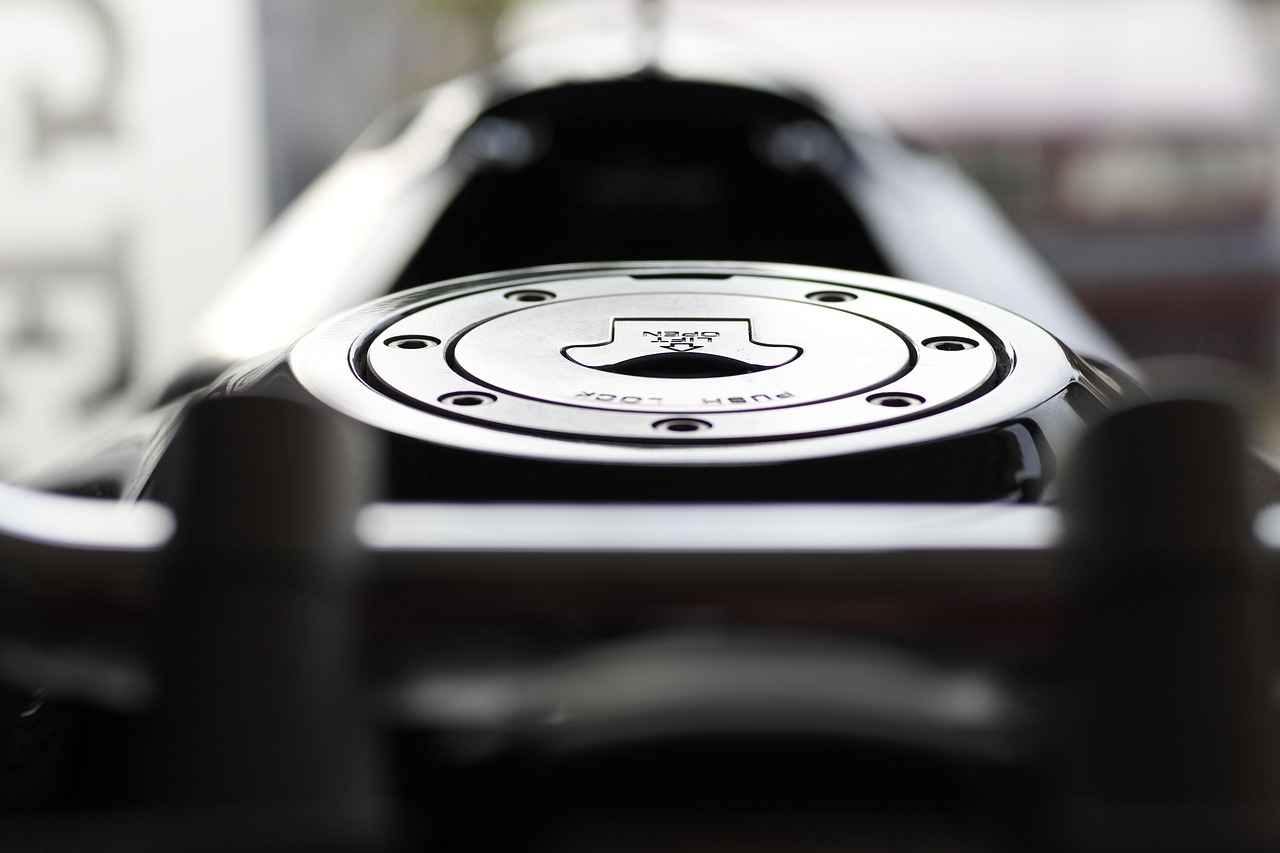This article provides a step-by-step guide on resetting the oil light in a Honda Accord, ensuring your vehicle maintenance is on track and your dashboard is clear of warning lights.
Understanding the reasons behind the oil light activation is crucial for vehicle maintenance. The oil light can illuminate for various reasons, including:
- Low Oil Level: When your oil level drops below the safe threshold, the light activates.
- Oil Change Needed: The light serves as a reminder for routine oil changes.
- Oil Pressure Issues: A malfunction in the oil pressure can trigger the warning.
Addressing these issues promptly is essential for maintaining your Honda Accord’s engine health.
Knowing the appropriate time to reset your oil light is essential. You should reset it after:
- Completing an Oil Change: Always reset the light after changing the oil.
- Checking Oil Levels: If you’ve topped up the oil, it’s a good time to reset.
This ensures that your vehicle’s maintenance tracking is accurate.
Before starting the reset process, having the right tools is important. You will need:
- Your Honda Accord’s Key: To turn on the ignition.
- Owner’s Manual: For model-specific instructions.
These items will ensure a smooth and efficient oil light reset experience.
Follow these detailed steps to reset the oil light in your Honda Accord:
The first step in the reset process is turning on the ignition. Insert the key or press the start button without starting the engine. This action powers up the dashboard.
Next, navigate to the oil life menu. Use the menu buttons on your steering wheel or dashboard to find the oil life indicator. This is typically found in the settings or maintenance section.
Once in the oil life menu, you can reset the indicator. Follow these steps:
- Press and hold the reset button until the oil life resets to 100%.
- Confirm that the reset was successful by checking the display.
Avoiding common pitfalls during the reset process can save time and frustration. Here are frequent errors:
- Not Turning on the Ignition: Ensure the ignition is on before accessing the menu.
- Skipping the Reset Confirmation: Always verify that the oil life has reset.
If the oil light stays illuminated after the reset, further investigation is necessary. Possible issues include:
- Oil Leak: Check for any leaks under your vehicle.
- Oil Pump Failure: A malfunctioning oil pump can prevent proper oil circulation.
Consult a professional mechanic if the light does not turn off.
Regular oil changes are vital for engine longevity. Changing your oil at recommended intervals helps prevent:
- Engine Wear: Fresh oil reduces friction and wear on engine components.
- Overheating: Clean oil helps maintain optimal engine temperature.
Adhering to a consistent oil change schedule ensures optimal performance and longevity of your Honda Accord.
Referring to your Honda Accord’s owner’s manual can provide specific guidance. This resource offers:
- Model-Specific Instructions: Detailed steps tailored to your specific model.
- Maintenance Schedule: Recommended intervals for oil changes and other services.
Consulting the manual can enhance your understanding of your vehicle’s needs.

Why Does the Oil Light Turn On?
Understanding why the oil light turns on in your Honda Accord is essential for maintaining your vehicle’s health. The oil light serves as a warning signal indicating potential issues that could affect the engine’s performance and longevity. Ignoring this warning can lead to severe engine damage, making it crucial to identify the common triggers behind its activation.
- Low Oil Pressure: One of the primary reasons for the oil light to illuminate is low oil pressure. This can be caused by a lack of oil in the engine, a faulty oil pump, or a blocked oil filter. When the oil pressure drops below a certain threshold, the oil light activates to alert the driver.
- Oil Level Issues: Insufficient oil levels can lead to inadequate lubrication of engine components. This situation can arise from oil leaks, consumption, or neglecting regular oil changes. Checking the oil level regularly is vital to prevent this issue.
- Oil Quality Deterioration: Over time, engine oil degrades due to heat and contamination. Using old or dirty oil can reduce its effectiveness, leading to increased friction and wear on engine parts. The oil light may activate to signal the need for an oil change.
- Faulty Sensors: Sometimes, the oil light may turn on due to a malfunctioning oil pressure sensor. If the sensor fails to provide accurate readings, it may trigger the oil light even when the oil level and pressure are acceptable.
When the oil light activates, it is a clear indication that immediate attention is needed. Ignoring the warning can lead to serious consequences, including:
- Engine Damage: Prolonged low oil pressure or insufficient oil levels can cause critical engine components to wear out prematurely, leading to costly repairs or even engine failure.
- Decreased Performance: An engine that is not properly lubricated may experience decreased performance, including reduced fuel efficiency and power.
- Increased Emissions: A poorly maintained engine can contribute to higher emissions, which is not only harmful to the environment but may also lead to failing emissions tests.
Upon noticing the oil light, it’s essential to take immediate action:
- Check Oil Level: Use the dipstick to check the oil level. If it’s low, add the appropriate oil type recommended for your Honda Accord.
- Inspect for Leaks: Look for any signs of oil leaks underneath the vehicle. If you notice oil spots or puddles, have the vehicle inspected by a professional.
- Consult a Mechanic: If the oil level is adequate and there are no visible leaks, it’s best to consult a mechanic to diagnose potential issues with the oil pressure sensor or other components.
By understanding the reasons behind the oil light activation and its implications, Honda Accord owners can take proactive steps to maintain their vehicle’s engine health and avoid costly repairs.

When Should You Reset the Oil Light?
When it comes to maintaining your Honda Accord, understanding when to reset the oil light is crucial for optimal vehicle performance. The oil light serves as an important reminder that your vehicle requires attention, particularly regarding oil changes. However, knowing the appropriate time to reset this light can significantly enhance the longevity of your engine.
What Triggers the Oil Light? The oil light typically activates due to two primary reasons: either the oil life has reached a critical level, or there is an issue with the oil pressure. It’s essential to monitor these indicators closely. If the oil life is low, it’s time for an oil change. If the light remains illuminated after an oil change, it may indicate a more serious issue, such as a leak or a failing oil pump.
Recommended Intervals for Resetting the Oil Light
- After Each Oil Change: The most common time to reset the oil light is after performing an oil change. This ensures that the oil life indicator accurately reflects the new oil’s lifespan.
- Every 5,000 to 7,500 Miles: If you follow a regular maintenance schedule, resetting the oil light should occur every 5,000 to 7,500 miles, depending on your driving habits and the type of oil used.
- When Oil Quality is Poor: If you notice that your oil appears dirty or has a burnt smell, it may be time for a change, and consequently, a reset.
Conditions for Resetting the Oil Light
Besides mileage, certain conditions indicate that it’s time to reset your oil light:
- After Oil Change Service: Always reset the light after an oil change, regardless of mileage, to ensure accurate monitoring.
- Post-Inspection: If your vehicle has undergone an inspection where oil levels were checked, resetting the light may be necessary.
- Following Engine Repairs: If your engine has been serviced and oil was changed, resetting the light is crucial.
Why is Timing Important? Resetting the oil light at the appropriate times not only keeps your dashboard clear of warning lights but also helps you track when your next oil change is due. This practice is essential for maintaining engine health and preventing potential damage that could arise from neglecting oil changes. Regular oil changes help ensure that your engine runs smoothly and efficiently, ultimately extending its lifespan.
Consulting Your Owner’s Manual is also recommended. Each Honda Accord model may have specific guidelines regarding oil changes and light resets. Your owner’s manual will provide tailored advice, ensuring that you follow the best practices for your particular vehicle.
In summary, understanding when to reset your oil light is vital for maintaining your Honda Accord. Regular checks, timely oil changes, and adherence to your owner’s manual will help you keep your vehicle in top condition. By following these guidelines, you can avoid potential issues and ensure a smooth driving experience.

Tools Needed for Resetting the Oil Light
Before embarking on the oil light reset process for your Honda Accord, it is crucial to gather the right tools. Having the necessary items at your disposal not only facilitates a smoother experience but also ensures that you can effectively complete the reset without unnecessary interruptions. Below is a comprehensive list of the tools and items you will need for this task.
- Owner’s Manual: This is your primary resource. The owner’s manual contains specific instructions tailored to your vehicle model, making it essential for understanding the reset procedure.
- Ignition Key or Push-Button Start: Depending on your Honda Accord model, you will need the ignition key or the push-button start to access the vehicle’s electrical systems.
- Odometer Reset Button: Familiarize yourself with the odometer reset button, as it plays a vital role in navigating the dashboard settings during the reset process.
- Diagnostic Tool (Optional): While not always necessary, a diagnostic tool can be beneficial for those who want to delve deeper into their vehicle’s health. It can provide additional insights if the oil light remains on after the reset.
Using the correct tools can significantly affect the efficiency of the reset process. For instance, without the owner’s manual, you may miss out on critical steps specific to your model, leading to confusion or errors. Similarly, having the proper ignition method is essential for accessing the settings you need to adjust.
Once you have gathered all the necessary tools, it is advisable to prepare your vehicle for the reset. Ensure that the engine is off, and the vehicle is parked on a level surface. This preparation minimizes the risk of accidental movements during the reset process.
- Double-Check Your Tools: Before starting, take a moment to verify that you have all the required items. This simple step can save you time and frustration.
- Read the Owner’s Manual: Familiarize yourself with the specific instructions in your owner’s manual. Understanding the steps beforehand can help you feel more confident during the reset.
- Stay Calm and Focused: Take your time during the process. Rushing can lead to mistakes, so ensure you are calm and focused while completing the reset.
By ensuring you have the right tools and taking the necessary preparations, you can achieve a successful oil light reset. This not only keeps your dashboard clear of warning lights but also contributes to the overall health of your Honda Accord. Remember, regular maintenance is key to a long-lasting vehicle.

Step-by-Step Guide to Reset the Oil Light
Resetting the oil light in your Honda Accord is a straightforward process that is essential for maintaining your vehicle’s health. This step-by-step guide will walk you through the necessary actions to ensure your oil light is reset correctly, keeping your dashboard clear and your vehicle in optimal condition.
Before diving into the steps, it’s important to understand that resetting the oil light should be done after you have changed your oil. This ensures that you are aware of when the next oil change is due, helping to maintain your engine’s performance.
- Step 1: Turn on the Ignition – Start by inserting your key into the ignition or pressing the start button without starting the engine. This action powers up the dashboard.
- Step 2: Access the Oil Life Menu – Use the controls on your steering wheel or dashboard to navigate to the oil life indicator. This is typically found in the settings menu on the display screen.
- Step 3: Reset the Oil Life Indicator – Once you are in the oil life menu, look for the option to reset the oil life. This may involve pressing and holding a button or selecting the reset option on the screen.
- Step 4: Confirm the Reset – After selecting the reset option, a confirmation message may appear. Make sure to confirm the reset to finalize the process.
- Step 5: Turn Off the Ignition – Finally, turn off the ignition and then restart your vehicle to ensure that the oil light is no longer illuminated.
This simple process can usually be completed in just a few minutes. However, if you encounter any issues, refer to your owner’s manual for model-specific instructions.
While resetting the oil light is generally straightforward, there are some common mistakes that can lead to complications:
- Skipping the Oil Change: Always ensure that you have completed an oil change before resetting the light.
- Not Following the Correct Steps: Make sure to follow the steps outlined above carefully to avoid confusion.
- Ignoring Warning Signs: If the oil light remains on after resetting, it could indicate a more serious issue. Do not ignore this warning.
If after following the reset steps the oil light continues to illuminate, it’s crucial to investigate further. Check your oil levels and ensure that the oil is clean. If everything appears normal but the light persists, consider taking your vehicle to a trusted mechanic for a thorough inspection.
Regular oil changes are vital for the longevity of your Honda Accord’s engine. Changing your oil at recommended intervals not only helps to keep your engine clean but also enhances its performance and efficiency. Make sure to follow the manufacturer’s recommendations regarding oil change frequency and type.
By adhering to these guidelines and understanding the importance of maintaining your oil light, you can ensure that your Honda Accord remains in excellent condition, free of unnecessary dashboard alerts.
Turning on the Ignition
When it comes to resetting the oil light in your Honda Accord, the first step is to turn on the ignition. This process is essential for initiating the reset procedure, ensuring that your vehicle’s maintenance indicators are accurately updated. Here’s a detailed guide on how to properly position the ignition key or utilize the push-button start feature for an effective reset.
The ignition system in your Honda Accord is designed to activate various electronic components when you turn the key or press the start button. It is crucial to ensure that the ignition is in the correct position to access the necessary menus for resetting the oil light. Here’s how to do it:
- For Traditional Key Ignition: Insert the ignition key into the ignition slot and turn it to the ON position without starting the engine. This action powers up the dashboard lights and electronic systems.
- For Push-Button Start: Ensure that your foot is on the brake pedal. Press the START button once without pressing the accelerator. This will activate the ignition and power the dashboard.
Positioning the ignition correctly is vital for several reasons:
- It allows the vehicle’s computer to engage and display the necessary menus.
- Incorrect positioning may prevent access to the oil life settings, leading to a failed reset.
- Ensuring the ignition is on prevents any confusion during the reset process.
Sometimes, users may encounter issues when trying to turn on the ignition. Here are some common problems and their solutions:
- Key Won’t Turn: If the key won’t turn, ensure that it is fully inserted and try wiggling it gently while turning.
- Push-Button Not Responding: If the push-button start does not respond, check that your foot is firmly on the brake pedal and that the vehicle is in PARK.
Once the ignition is successfully turned on, the next step is to access the oil life menu on your dashboard. This will involve navigating through the vehicle’s settings. Be prepared to follow the instructions closely to ensure a smooth reset process.
In conclusion, turning on the ignition is a critical first step in the oil light reset process for your Honda Accord. By following the guidelines outlined above, you can ensure that you are correctly positioned to proceed with the reset, ultimately maintaining the health and performance of your vehicle.
Accessing the Oil Life Menu
Accessing the oil life menu in your Honda Accord is a crucial step in the process of resetting the oil light. This menu provides vital information regarding your vehicle’s oil life percentage and allows you to perform the reset when necessary. Understanding how to navigate to this menu effectively can save you time and ensure that your vehicle maintenance is up to date.
The oil life menu is essential because it displays the remaining life of your engine oil, expressed as a percentage. When this percentage drops to a certain level, it indicates that an oil change is due. Resetting the oil life indicator after an oil change is important to keep track of when the next maintenance is needed.
To access the oil life menu, follow these simple steps:
- Turn on the Ignition: Insert your key into the ignition or press the start button to activate the electrical systems without starting the engine.
- Use the Dashboard Controls: Locate the controls on your steering wheel or dashboard. The menu button is typically found on the left side of the steering wheel.
- Navigate to the Settings: Press the menu button repeatedly until you see the settings option on the display screen.
- Select ‘Oil Life’: Use the arrow keys to scroll through the options until you find ‘Oil Life’ and select it.
Here are some tips to make your navigation to the oil life menu more efficient:
- Familiarize Yourself: Spend some time getting to know your dashboard layout and controls to make navigation easier in the future.
- Consult the Owner’s Manual: If you’re unsure about the steps, refer to your Honda Accord owner’s manual for model-specific instructions.
- Practice: Regularly accessing the oil life menu can help you remember the process and make it quicker each time.
Once you have successfully accessed the oil life menu, you will see the current percentage of your oil life. If you have recently changed your oil, it is time to reset this indicator. Follow the on-screen instructions or use the reset option available in the menu. This step is crucial to ensure that your dashboard accurately reflects your vehicle’s maintenance needs.
Some drivers may encounter challenges while trying to access the oil life menu. Here are a few common issues and their solutions:
- Display Not Responding: If the display does not respond, ensure that your vehicle is in the ‘On’ position and that the battery is functioning properly.
- Difficulty Navigating: If you have trouble navigating through the menu, take your time and don’t rush. Familiarity will make the process easier.
- Missing Options: If the oil life option is not visible, it may be due to a malfunction. In such cases, consult a professional mechanic.
By understanding how to access the oil life menu effectively, you can maintain your Honda Accord’s performance and ensure that it is always in top condition. Regular monitoring of your oil life will help prolong the life of your engine and enhance your driving experience.
Resetting the Oil Life Indicator
Resetting the oil life indicator in your Honda Accord is an essential part of vehicle maintenance. This process ensures that you stay on top of your oil change schedule and helps maintain your engine’s health. Below, we provide a detailed guide to help you through this straightforward procedure.
The oil life indicator is a feature in your Honda Accord that monitors the condition of your engine oil. It provides a visual reminder when it’s time for an oil change, helping you maintain optimal engine performance. Understanding how to reset this indicator is crucial for keeping your dashboard free of warning lights.
Resetting the oil life indicator is important for several reasons:
- Accurate Maintenance Tracking: It allows you to accurately track when your next oil change is due.
- Preventing Engine Damage: Regular oil changes prevent engine wear and tear.
- Clear Dashboard: A reset ensures that your dashboard is free from unnecessary warning lights.
Once you have accessed the oil life menu, resetting the indicator is a simple process. Follow these steps:
- Turn on the Ignition: Insert the key into the ignition and turn it to the “On” position without starting the engine. For push-button models, press the button twice without pressing the brake pedal.
- Access the Oil Life Menu: Use the steering wheel controls to navigate to the “Settings” or “Maintenance” section on the dashboard display. Look for the “Oil Life” option.
- Reset the Indicator: Once in the oil life menu, press and hold the “Enter” button or the “Reset” button until the oil life resets to 100%. You should see a confirmation message on the display.
While resetting the oil life indicator is straightforward, there are common mistakes that can hinder the process:
- Not Turning on the Ignition: Ensure the ignition is on; otherwise, the reset will not work.
- Skipping the Oil Life Menu: Make sure you navigate to the correct menu before attempting the reset.
- Failing to Confirm the Reset: Always check for a confirmation message that indicates the reset was successful.
If the oil light remains illuminated after resetting, further investigation is needed. Here are some steps to follow:
- Check Oil Levels: Ensure that your oil levels are adequate.
- Inspect for Leaks: Look for any signs of oil leaks under your vehicle.
- Consult a Professional: If issues persist, it may be time to consult a mechanic for further diagnosis.
Regular oil changes are vital for the longevity of your Honda Accord. They help remove contaminants from the engine oil, ensuring that your engine runs smoothly and efficiently. By adhering to a regular oil change schedule, you can prevent costly repairs and maintain optimal performance.
In conclusion, resetting the oil life indicator is a crucial step in maintaining your Honda Accord. By following these steps and avoiding common mistakes, you can ensure that your vehicle remains in excellent condition. Always refer to your owner’s manual for specific instructions related to your model, and remember that regular maintenance is key to a healthy engine.

Common Mistakes to Avoid
When resetting the oil light in your Honda Accord, it is essential to be aware of common mistakes that can hinder the process. Understanding these pitfalls can save you both time and frustration, ensuring a smooth and effective reset. This section outlines frequent errors and provides preventive measures for a successful reset.
- Skipping the Owner’s Manual: Many drivers overlook the importance of consulting their owner’s manual. Each Honda Accord model may have specific instructions for resetting the oil light. Always refer to your manual to ensure you follow the correct procedure.
- Not Turning on the Ignition Properly: A common mistake is failing to turn the ignition key or push-button start correctly. Make sure the ignition is in the ‘On’ position, but do not start the engine. This step is crucial for accessing the oil life menu.
- Ignoring the Oil Life Menu: Some users may not navigate to the oil life menu adequately. Take your time to locate this menu on your dashboard. It is typically found within the settings or maintenance section, and missing it can lead to an unsuccessful reset.
- Failing to Confirm the Reset: After selecting the reset option, it is essential to confirm the action. Some may assume the reset is complete without proper confirmation, leading to the oil light remaining on.
- Neglecting Regular Maintenance: Resetting the oil light without performing an oil change is a significant error. Ensure that you have completed the necessary oil change before resetting the light. This practice maintains engine health and performance.
- Overlooking Dashboard Warnings: If the oil light remains on after a reset, do not ignore it. This could indicate an underlying issue that requires immediate attention. Investigate further to avoid potential engine damage.
By being aware of these common mistakes, you can enhance your reset experience and maintain the health of your Honda Accord. Taking the time to follow each step carefully will ensure that your oil light reset is successful, keeping your dashboard clear and your vehicle in optimal condition.
In conclusion, avoiding these pitfalls is essential for a hassle-free reset process. Always remember to consult your owner’s manual, navigate the settings carefully, and confirm your actions. This diligence will help you keep your Honda Accord running smoothly and efficiently.

What to Do If the Oil Light Remains On?
If the oil light stays illuminated after you have reset it, it’s crucial to take immediate action. Ignoring this warning could lead to serious engine issues. In this section, we will delve into the potential problems that may cause the oil light to remain on and outline the necessary troubleshooting steps you should take.
When the oil light stays on, it may indicate several underlying issues:
- Low Oil Pressure: This could be due to insufficient oil levels or a malfunctioning oil pump.
- Oil Leak: Check for any visible oil leaks under your vehicle, which could lead to low oil levels.
- Faulty Oil Pressure Sensor: A defective sensor might incorrectly signal that there is an oil pressure issue.
- Oil Quality: Old or dirty oil can affect the performance of the engine and trigger the oil light.
If the oil light remains on, follow these troubleshooting steps:
- Check Oil Level: Start by checking the oil level using the dipstick. If it’s low, add the recommended oil type for your Honda Accord.
- Inspect for Leaks: Look under your car for any signs of oil puddles or leaks. If you find any, it’s essential to address them promptly.
- Examine the Oil Pressure Sensor: If the oil level is adequate and there are no leaks, the oil pressure sensor may be faulty. Consider consulting a mechanic for a thorough inspection.
- Change the Oil: If the oil is dirty or hasn’t been changed in a while, perform an oil change. This can help restore proper engine function.
If you’ve gone through the troubleshooting steps and the oil light is still illuminated, it’s time to visit a professional mechanic. They have the tools and expertise to diagnose and resolve complex issues that may not be apparent to the average car owner.
To avoid future occurrences of the oil light coming on, consider implementing the following preventive measures:
- Regular Oil Changes: Adhere to the recommended oil change intervals outlined in your owner’s manual.
- Routine Maintenance Checks: Schedule regular maintenance checks to catch potential issues before they escalate.
- Monitor Oil Levels: Regularly check your oil levels and top off as necessary to ensure your engine runs smoothly.
In conclusion, the oil light in your Honda Accord is a critical indicator of your engine’s health. If it remains on after a reset, take the necessary troubleshooting steps outlined above and consult a professional if needed. By staying proactive about your vehicle’s maintenance, you can help ensure its longevity and performance.

Importance of Regular Oil Changes
When it comes to vehicle maintenance, one of the most critical aspects is ensuring that your engine remains in top condition. Regular oil changes play a pivotal role in achieving this goal. This section will delve into the , highlighting how they contribute to engine longevity and optimal performance.
Engine oil serves as the lifeblood of your vehicle, lubricating moving parts, reducing friction, and preventing overheating. Over time, oil can become contaminated with dirt, debris, and other particles, which can lead to engine wear and tear. By adhering to a consistent oil change schedule, you can:
- Prevent Engine Damage: Old, dirty oil can cause severe damage to engine components, leading to costly repairs.
- Enhance Fuel Efficiency: Clean oil allows the engine to operate more efficiently, improving fuel economy.
- Extend Engine Life: Regular oil changes help maintain the engine’s health, potentially adding years to its lifespan.
The frequency of oil changes can depend on various factors, including the type of oil used and driving conditions. Generally, it is recommended to change the oil every 3,000 to 7,500 miles. However, consulting your vehicle’s owner’s manual will provide specific guidelines tailored to your Honda Accord.
Neglecting oil changes can lead to a host of problems, including:
- Increased Engine Wear: Dirty oil can cause friction between engine parts, leading to premature wear.
- Overheating: Oil loses its ability to cool and lubricate, which can result in overheating.
- Sludge Build-Up: Old oil can turn into sludge, clogging the engine and leading to catastrophic failure.
Being proactive about oil changes can save you from significant issues down the road. Here are some signs that indicate it’s time for an oil change:
- Oil Change Light: If your dashboard oil light illuminates, it’s a clear signal to change the oil.
- Dark, Sludgy Oil: If you check your oil and it appears dark and thick, it’s time for a change.
- Unusual Engine Noises: Knocking or grinding sounds can indicate that the oil is no longer providing adequate lubrication.
Investing in high-quality oil can significantly enhance your engine’s performance. Synthetic oils, for instance, offer better protection against heat and breakdown, ensuring that your engine runs smoothly. Additionally, they can improve fuel efficiency and extend the intervals between oil changes.
If you’re unsure about when to change your oil or what type to use, consulting a professional mechanic can provide valuable insights. They can assess your vehicle’s needs and help you establish a maintenance routine that keeps your engine healthy.
In summary, regular oil changes are not just a suggestion; they are a necessity for maintaining your Honda Accord’s engine health. By adhering to a consistent oil change schedule and being aware of the signs that indicate a change is needed, you can ensure that your vehicle remains in optimal condition for years to come.

Consulting Your Owner’s Manual
When it comes to maintaining your Honda Accord, one of the most valuable resources at your disposal is your owner’s manual. This comprehensive guide is tailored specifically to your vehicle model and provides essential information that can help you understand various aspects of your car’s operation and maintenance.
Your owner’s manual serves as a roadmap for your Honda Accord. It contains crucial details about the vehicle’s features, specifications, and maintenance schedules. By referring to it, you can ensure that you are following the manufacturer’s recommendations, which can significantly affect the performance and longevity of your vehicle.
- Maintenance Schedule: The manual outlines when to perform routine services like oil changes, tire rotations, and brake inspections.
- Fluid Specifications: It specifies the types of fluids required for your vehicle, including oil, coolant, and transmission fluid.
- Troubleshooting Tips: The manual provides guidance on common issues and how to address them before seeking professional help.
- Safety Features: Understanding the safety features of your Honda Accord is crucial, and the manual explains how to utilize them effectively.
By following the guidelines in your owner’s manual, you can avoid unnecessary repairs and maintenance costs. Regularly scheduled maintenance can prevent larger issues from developing, ultimately saving you money in the long run. Additionally, understanding your vehicle’s needs can help you avoid costly mistakes, such as using the wrong type of oil or neglecting vital services.
Yes, each Honda Accord model may have unique features or requirements. Your owner’s manual will provide model-specific instructions that are essential for optimal performance. This includes information on advanced technologies, specific maintenance intervals, and any recalls or updates pertinent to your model.
It is advisable to consult your owner’s manual regularly, especially when planning maintenance or if you notice any warning lights on your dashboard. Keeping it handy can also be beneficial when troubleshooting minor issues or when preparing for long trips.
Many manufacturers, including Honda, provide digital versions of their owner’s manuals on their official websites. This can be a convenient option if you misplace the physical copy. Simply search for your model and year to find the relevant manual.
In summary, consulting your Honda Accord’s owner’s manual is not just a good practice; it’s essential for maintaining your vehicle’s health and ensuring a smooth driving experience. By understanding and following the guidelines provided, you can enhance your vehicle’s performance, increase its longevity, and save money on repairs.
Frequently Asked Questions
- How do I know when to reset my Honda Accord oil light?
It’s time to reset your oil light after you’ve changed the oil or if you notice it illuminating on your dashboard. Keeping track of your oil change schedule is crucial for your engine’s health!
- What tools do I need to reset the oil light?
You don’t need much! Just your vehicle’s ignition key or push-button start, and a little patience. No fancy tools required—just follow the steps outlined in the guide!
- What if the oil light stays on after resetting?
If the oil light remains lit, it could indicate a deeper issue with your engine or oil system. It’s best to consult a mechanic to diagnose any potential problems before they escalate.
- Is it safe to drive with the oil light on?
Driving with the oil light on is risky! It’s a warning sign that your engine may not be getting the lubrication it needs. Pull over and address the issue immediately to avoid serious damage.
- How often should I change my oil?
Typically, it’s recommended to change your oil every 5,000 to 7,500 miles, but always check your owner’s manual for model-specific advice. Regular changes are key to keeping your engine running smoothly!



